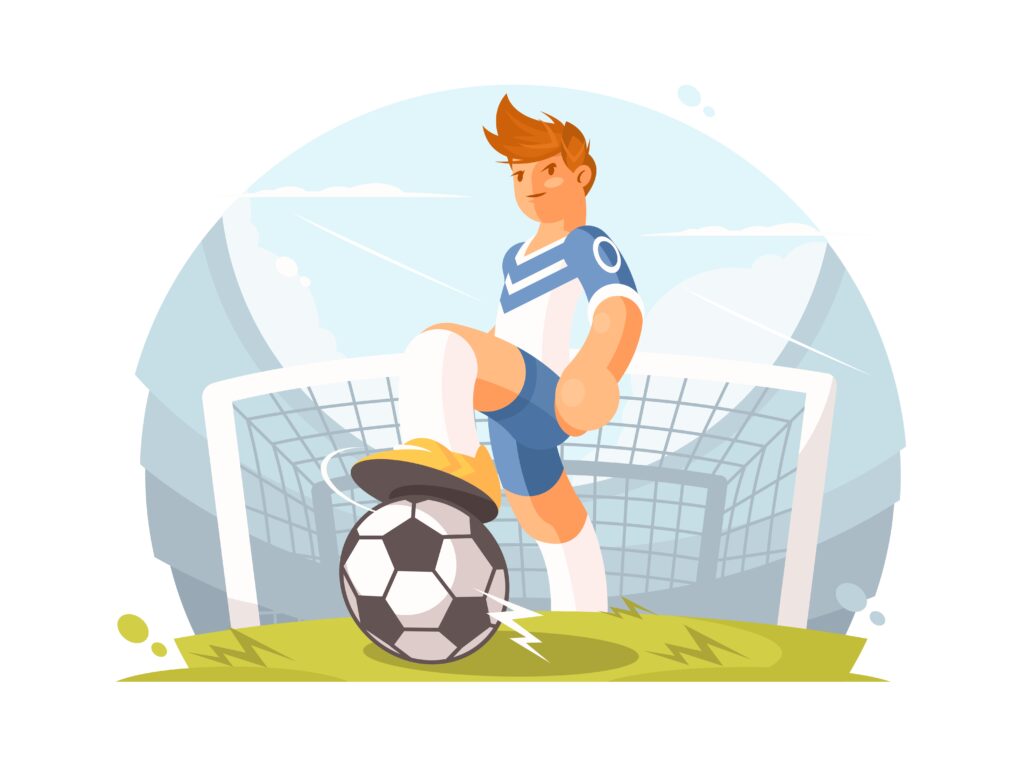How to Build an Athletic Portfolio to Impress College Coaches
If you’re a student-athlete dreaming of playing sports in college, creating an athletic portfolio is one of the most important steps you can take. College coaches look for talented players who not only perform well in their sport but also have the determination and organization to succeed. A great portfolio showcases your athletic achievements, skills, and academic strengths, helping you stand out from the competition. It also shows that you are serious about your future as a college athlete and have taken the time to prepare. With a well-crafted portfolio, you can make a strong first impression and set yourself apart from other recruits.
This guide will break down how to create an athletic portfolio that gets noticed by college coaches.

Why Is an Athletic Portfolio Important?
An athletic portfolio acts like your sports resume. It’s a collection of everything that shows your abilities and potential to play at the college level. Coaches often have hundreds of athletes to evaluate, so having a well-organized and professional portfolio makes it easier for them to learn about you.
Fun Fact:
According to the NCAA, there are over 8 million high school athletes, but less than 7% go on to play in college. A strong portfolio can help you join that small percentage!
What Coaches Look For:
- Your athletic performance (stats, awards, and highlights).
- Academic achievements (grades and test scores).
- Personal qualities like leadership, teamwork, and work ethic.
Step 1: Start with Basic Information
Your portfolio should begin with your personal details. This information helps coaches quickly learn who you are and how to contact you.
Include:
- Name, Age, and Contact Information: Make sure your email address and phone number are professional and easy to reach.
- High School and Graduation Year: Coaches need to know what year you’re graduating to plan recruitment timelines.
- Position and Sport: Specify your primary position and any secondary positions you play.
- Physical Stats: Include your height, weight, and any key measurements (e.g., vertical jump or 40-yard dash time).
Example:
Name: Alex Johnson
Age: 17
High School: Lincoln High School
Graduation Year: 2025
Sport: Basketball
Position: Point Guard
Height: 6’1”
Weight: 180 lbs
Vertical Jump: 32 inches
Email: alexjohnson@example.com
Phone: (555) 555-1234 Step 2: Highlight Your Athletic Achievements
This is the most important section of your portfolio. It should showcase what makes you stand out as an athlete.
What to Include:
- Stats: List your season averages or key statistics (e.g., points per game, yards per carry, goals scored).
- Awards: Highlight any honors you’ve earned, like MVP, All-Conference, or Captain.
- Team Achievements: Mention if your team won championships or tournaments.
- Video Highlights: A link to a highlight reel is essential. Coaches often look at video footage before anything else.
Tip for Videos:
- Keep your highlight reel between 3-5 minutes long.
- Start with your best plays to grab the coach’s attention.
- Use clear footage and label the clips with your name and position.
Step 3: Include Academic Information
Coaches don’t just want great athletes; they want students who can succeed academically. Make sure to include your academic performance in your portfolio.
Key Academic Details:
- GPA: Include your most recent GPA (weighted and unweighted if applicable).
- Test Scores: Add your SAT, ACT, or other standardized test scores if available.
- Honors and Awards: Mention any academic awards or achievements, like Honor Roll or National Honor Society.
- Transcripts: Some coaches may ask for an official transcript, so be ready to provide one if requested.
Example:
GPA: 3.8 (unweighted), 4.2 (weighted)
SAT: 1250
Academic Honors: Honor Roll (3 years), AP Scholar Step 4: Add Personal Qualities and Extracurriculars
Coaches often look for well-rounded athletes who bring more to the team than just skills. Highlight your personal qualities and other activities to show your character.
What to Include:
- Leadership Roles: Mention if you’ve been a team captain or held other leadership positions.
- Community Service: List volunteer work or community involvement.
- Other Hobbies: Show that you have interests outside of sports, like music, art, or clubs.
- Work Experience: If you’ve had a job, it can demonstrate responsibility and time management.
Example:
Leadership: Team Captain, Junior Year
Community Service: Volunteered 50+ hours at the local animal shelter
Hobbies: Plays guitar and participates in school drama club
Work Experience: Part-time cashier at a grocery store Step 5: Create a Professional Format
The way your portfolio looks matters just as much as the information inside it. A clean, professional format makes it easier for coaches to read.
Formatting Tips:
- Use clear headings and bullet points.
- Choose a simple font like Arial or Times New Roman.
- Include a table of contents if your portfolio is long.
- Use high-quality paper if you’re submitting a physical copy.
Digital Portfolios:
- Many coaches prefer digital portfolios. Use tools like Google Drive, Canva, or a personal website to showcase your portfolio online.
- Make sure any links (like video highlights) are active and easy to access.
Step 6: Tailor Your Portfolio to Each Coach
Not all coaches are looking for the same things. Research the schools and programs you’re interested in, and adjust your portfolio to fit their needs.
Tips for Customization:
- Learn About the Program: What does the coach value most? Look for details on the team’s website or social media.
- Emphasize Relevant Skills: Highlight the skills that match the team’s playing style or needs.
- Personalize Your Communication: When emailing coaches, include a short note about why you’re interested in their program.
Step 7: Prepare for Communication
Reaching out to coaches is just as important as creating your portfolio. Be professional and polite in all your communications.
Email Tips:
- Use a clear subject line, like “Alex Johnson – Basketball Point Guard, Class of 2025.”
- Keep the email short and to the point.
- Attach your portfolio or include a link to your digital portfolio.
- Thank the coach for their time and express interest in their program.
Example Email:
Subject: Alex Johnson – Basketball Point Guard, Class of 2025
Dear Coach [Last Name],
My name is Alex Johnson, and I am a point guard at Lincoln High School in the Class of 2025. I am very interested in your basketball program at [School Name] because of its strong focus on teamwork and development. Attached is my athletic portfolio, which includes my stats, highlights, and academic achievements.
Thank you for taking the time to review my information. I would love the opportunity to discuss how I can contribute to your team. Please let me know if you need any additional materials or have any questions.
Best regards,
Alex Johnson
Phone: (555) 555-1234
Email: alexjohnson@example.com 
Common Mistakes to Avoid
Even the best athletes can make mistakes when building their portfolios. Avoid these common errors to make the best impression.
Mistake #1: Forgetting Contact Information
Always include your email and phone number. Coaches can’t reach you without it! Double-check that your contact information is accurate and up-to-date. A small error in your email or phone number could mean missing out on important opportunities.
Mistake #2: Overloading with Information
Keep your portfolio concise. Focus on the most important details, such as your athletic stats, academic achievements, and leadership roles. Prioritizing quality over quantity ensures that coaches quickly find the information they need without feeling overwhelmed.
Mistake #3: Using Poor-Quality Videos
Blurry or hard-to-follow highlight reels can hurt your chances. Invest in good footage that clearly showcases your skills and abilities. Make sure to use proper lighting and angles to highlight your movements effectively, and consider asking a coach or teammate for feedback on your video before finalizing it.
Mistake #4: Not Proofreading
Spelling or grammar mistakes can make your portfolio look unprofessional. They might give coaches the impression that you didn’t put enough effort into your application. Always proofread your portfolio multiple times or ask someone else to review it for any errors.
Conclusion
Building an athletic portfolio is an essential step for student-athletes aiming to impress college coaches. By including your personal details, athletic achievements, academic performance, and personal qualities, you’ll create a portfolio that stands out. Remember to keep it professional, tailor it to each coach, and stay organized.
With a strong portfolio and good communication skills, you can take your first step toward playing sports at the college level. Good luck!
